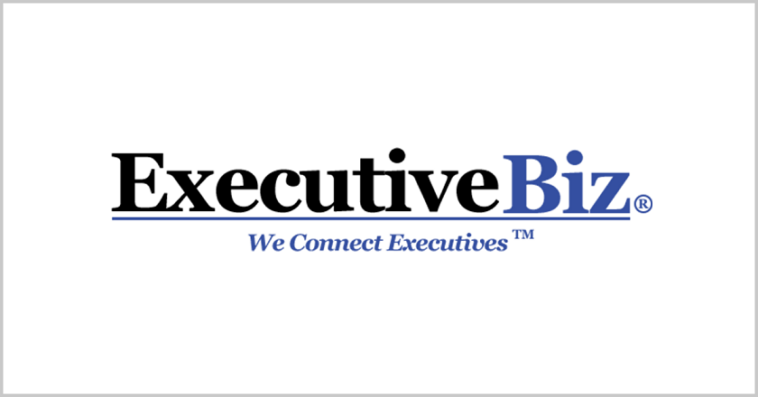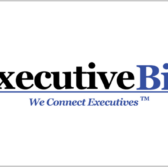 Janet Foutty took leadership of Deloitte‘s federal practice in January 2014 after a 23-year tour through the firm in roles such as managing director of technology and a stint on its financial services industry leadership team.
Janet Foutty took leadership of Deloitte‘s federal practice in January 2014 after a 23-year tour through the firm in roles such as managing director of technology and a stint on its financial services industry leadership team.
Foutty, an inductee into Executive Mosaic’s Wash100 list for 2015, offered a preview of how she thinks shared services models and other technology advancements will shape federal organizations in her “2015 Federal Government Industry Outlook” for Deloitte.
ExecutiveBiz recently caught up with Foutty to expand on those areas for an in-depth conversation that also included her thoughts on how agencies and businesses should approach leadership development and construct the next generation of STEM workers.
ExecutiveBiz: What trend has been the biggest disruptor since you started as Deloitte’s federal leader?
Janet Foutty: Without a doubt, the biggest disruptor has been anything related to cyber, cyber crime and cyber incidents both within the government as well as within the commercial business. The most visible change is how federal organizations prepare for, respond, react to, and recover from cyber incidents and this certainly pushes our clients — from business leadership of the agencies through CIOs in their team.
There are many other things are evolving but cyber has experienced the most marked shift in my time since I have been here.
ExecutiveBiz: Which areas of global and digital services will start to emerge in 2015?
Janet Foutty: In the last five years, I focused on driving digital services and the changing role of our client interaction with our customers during my tenure in Deloitte’s commercial technology business. It has been really fun to see that evolving so aggressively and so significantly in the federal space. At the end of the day the demand for mobile-first digital government continues in an upward trajectory directly aligned with consumers’ expectations of purchasing goods and services.
The government is responding aggressively to that. The president put on executive orders in trying to begin the conversation on providing customer service in a meaningful way over the last twelve months. The government is clearly putting a lot of energy around this with everything from 18F to the White House Digital Services teams.
With the American Customer Service Index, we look at the commercial side of the businesses and we help our clients. The gap between commercial versus federal is widening and expectations continue to increase. It is not normal for people to think about the government as a retailer. If you take a look at everything from Amtrak and the U.S. Postal Service to regulatory agencies, our clients across those missions are focusing on mobile and digital as they think about how to better serve their citizens, which we are really energized about.
From hackathons and digital strategies to rethinking business operations with mobile, we are seeing the trend of thinking about citizens as customers and citizens as consumers. We are trying to take the work we’ve done in the commercial side around customer experience, how it can transform an organization’s performance, tailor it for government and bring it to bear. There are some early success stories on that front but there are great things yet to come.
ExecutiveBiz: What steps are agencies taking this year towards shared services models like cloud computing?
Janet Foutty: Government agencies are looking to cloud as something that will help them make better use of their IT dollars. Cloud can reduce portions of an agency’s IT infrastructure that depreciate and are costly to refresh. The other dimension is the movement from a capital-based to an operational-based expense model and all the good that comes with that. And, of course, agencies are trying to figure out the cloud service with a heavy eye on security.
Another aspect to the cloud is that it is both a proxy and an enabler for shared services. We see a lot of movement towards shared services from a business-process perspective in addition to cloud. Many of our clients understand that moving the traditional back office functions such as finance, HR, the core and operational parts of IT into the shared services models, allows them to focus their intellect and money on the mission. That movement in federal, which is a nice mimic of the commercial space, has been increasing in frequency over the last year.
The government’s ability to figure out shared services will be a huge game changer as we think about effectiveness and efficiency. The government is getting of the replication of services that are not core to their missions. It is all about understanding functions that can be moved to the cloud, building those cases around them, and finding business processes and models that can support them.
ExecutiveBiz: How should GovCon industry and agencies collaborate to find and cultivate the next generation of public service and STEM workers?
Janet Foutty: There is a crossover of the issues to the next generation of public service both STEM and non-STEM. We have work to do as a country on communicating the fact that STEM careers are not just about job stability and income but are about having impact. The research around millennials show their interest in giving back, being socially engaged, working a highly collaborative environment on things that are really important and have a big impact.
There is no better place to fundamentally do that than in helping our government — whether that is through working directly for the government or as a government contractor. We must change our approach and better align with millennials’ values in terms of having an impact.
This shift to focusing on innovation ties to the technology and the conversation around constituents as consumers. We see that employee satisfaction ties directly into customer service and feeling like the organization is leading and around technology. With some of the work that we do with the Partnership for Public Service, we find that agencies aptly engage their people by being mission-focused. Additionally, those agencies that have the highest satisfaction of their customers also have the highest satisfaction of their employees, which is a really interesting dynamic.
ExecutiveBiz: Where are GovCon stakeholders looking to find that new generation of STEM workers and who else can help in that effort?
Janet Foutty: People who work for federal government under the age of 30 accounts for 7 percent versus in the private sector, which is 25 percent. Thinking about the time I spend on college campuses and with twenty-somethings both with our organizations and marketplace as a whole, we can shine the bright spotlight around STEM and non-STEM work of a mission-critical nature for the federal government. As the mother of teenagers, this is a personal interest to me as I help my kids think about how they are going to have a biggest impact.
Together with community-based organizations, we in government contracting can focus on and help tell the stories about the government’s innovative work, such as the Partnership For Public Service’s Service to America award recipients. The government contracting community and non-profits that focus on government agencies can up the conversation on college and high school campuses around the call for public service. We need to emphasize the interesting nature of the work one can do very early in your career and to start to change that reputation and brand.
The federal marketplace is near and dear to my heart having grown up as a child of a civil servant. My father spent a long and productive career as chief and senior investigator in the NIMH Laboratory of Molecular Biology doing really leading-edge research. He could have been in many biotech and/or university settings with a very different career path, but he felt passionately that the work he was doing on behalf of our country and the government matter the most.
IÂ would like to help our clients focus on how to change their conversations. The good news out of all this is that our clients really are beginning to engage in this discussion in a meaningful way and realize the call to action on this front which we are right there with them.
ExecutiveBiz: Is there another trend in recruiting we should watch in 2015?
Janet Foutty: Our piece on human capital trends is a fun read. At the top of the trends list is leadership development, which is a conversation that has been very low in the federal government and in the government contracting space.
Given all the things around innovation in technology, critical thinking related to cyber and the workforce, leadership development is the number one thing that should be talked about more as we move the conversation forward because investing in leadership development, can better engage the current federal workforce and make government service more attractive to millennials as well as younger generations. But it requires a lot of effort and commitment.
We’re working with a number of our clients on ways to strengthen federal workforce through leadership development so it is something you will continue to see as a focus for us and our clients in the federal government — it is that important.




